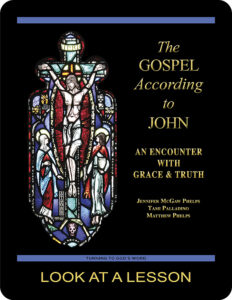blessing (1)
 In the Gospel According to Matthew 14:19 (NABRE), Jesus blesses the bread and as a result it multiplies. This is a powerful act and one that triggers a miraculous intervention by God. Blessing remains a deeply important part of our religious practice today and one that we continue to hope will invoke God’s miraculous intervention. Still, in today’s practice, the concept of what a blessing is and does has potentially become a bit obscured. Take a moment to consider what you think is meant by blessing. What is a blessing? What does it do? How does one administer it?
In the Gospel According to Matthew 14:19 (NABRE), Jesus blesses the bread and as a result it multiplies. This is a powerful act and one that triggers a miraculous intervention by God. Blessing remains a deeply important part of our religious practice today and one that we continue to hope will invoke God’s miraculous intervention. Still, in today’s practice, the concept of what a blessing is and does has potentially become a bit obscured. Take a moment to consider what you think is meant by blessing. What is a blessing? What does it do? How does one administer it?
In both Greek and Latin, the word for blessing is a compound consisting of two parts. The first part is a prefix meaning “good” or “well.” The second part is a word for speech. In the Greek, then, we have εὐ (eu) plus λογέω (logeo). Logeo means “I speak,” and the prefix eu modifies that meaning to be “I speak well of” or “I praise.” The same holds for the Latin benedicere. Blessing, then, fundamentally is an act of speech, specifically of good speech, and blessings seem to fall into the category of performative speech, speech that makes what it says a reality. Other common examples in human society include things like the words of a marriage that affect that union.
At their heart, blessings are spoken words that have the ability to alter reality in some way as Jesus’ blessing does in the Gospel According to Matthew. We notice today that such acts exist almost exclusively in a liturgical context, and this is not an accident. As non-divine, human people, our words ordinarily do not change reality, but when we speak as Christ and Christ speaks through us, those words gain a tremendous amount of power and authority and are then able to affect change. God has given us a framework within which we can speak with his voice in our liturgy, and so liturgical blessings in any capacity are extraordinarily powerful.
related topics: beatitude; blessed; blessing (2); favor with God
you also may like our study of the Gospel According to John
 The Gospel According to John: An Encounter with Grace & Truth, a 25-lesson Catholic Bible study with an imprimatur, examines the Fourth Gospel’s view of Jesus Christ as the Son of God, with special emphasis on the institution of the sacraments of the Church as the means by which Christians are purified and made holy. This recently revised study includes maps and additional commentary, and takes a closer look at the way in which Jesus relates to individual men and women. Click on the book’s cover to view a sample lesson.
The Gospel According to John: An Encounter with Grace & Truth, a 25-lesson Catholic Bible study with an imprimatur, examines the Fourth Gospel’s view of Jesus Christ as the Son of God, with special emphasis on the institution of the sacraments of the Church as the means by which Christians are purified and made holy. This recently revised study includes maps and additional commentary, and takes a closer look at the way in which Jesus relates to individual men and women. Click on the book’s cover to view a sample lesson.
 Click on the picture of the statue of Moses with horns (above) to learn more about Lost in Translation. A new entry is archived each Monday. Contact us to receive Lost in Translation by email every week. You may use any of the contact links on our website to ask Matthew a question.
Click on the picture of the statue of Moses with horns (above) to learn more about Lost in Translation. A new entry is archived each Monday. Contact us to receive Lost in Translation by email every week. You may use any of the contact links on our website to ask Matthew a question.
